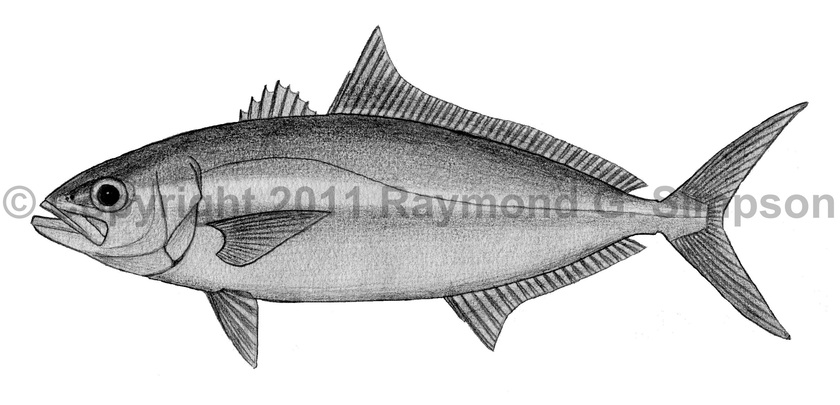
Common Name
Banded Rudderfish
Year Described
Mitchill, 1815
Identification
Dorsal Fin: 8 spines in first dorsal (some reduced or embedded in large fish), followed by I, 33-39
Anal Fin: 2 separate spines (reduced and embedded in large fish), followed by I, 19-21
Pelvic Fin: I, 5
Gill Rakers: 2-4 upper, 11-13 lower; 12-17 total in large fish, 20-25 in fish <10cm
Vertebrae: 11 precaudal, 13 caudal
Elongate and moderately deep bodied. Jaw extends to the posterior margin of eye. Teeth minute and present in both jaws. Spiny first dorsal much lower than second dorsal. Second dorsal base 1.6-2.1 times longer than anal fin base. Second dorsal and anal fin have raised anterior lobes (dorsal lobe 7.3-8.0 times in FL). Pelvic fins larger than pectoral fin. Lateral line with a shallow anterior arch and a straight posterior portion with no scutes. Caudal peduncle groove present. Body smooth with tiny cycloid scales. First anal pterygiophore curved in fish >10cm.
Color
Adults bluish to greenish dorsally, grading to silvery-white on the belly. A faint bar often runs from the eye to dorsal fin and a faint gold stripe is often present from eye to tail. The dorsal fin and tail is dusky with a light distal margin. Anal and pelvic fins more white, with dusky pigment in the middle of the fin. Juveniles white, boldly marked with 6 dark bands on the body and a dark eye stripe, with dark fins. The pelvic fin is enlarged and black, and the caudal fin lobes are tipped with white.
Size
Averages under 47cm. Maximum size to 80cm.
Habitat
Continental waters, in the open ocean or over the bottom. Juveniles associated with flotsam and larger fishes.
Range
Maine to Brazil, but not common in the Caribbean islands. Confused with S. lalandi, but that species has only been caught in the SW Atlantic.
References
Smith-Vaniz, W.F. 2003. Carangidae (pp 1426-1468). In: Carpenter. 2003. The living marine resources of the Western Central Atlantic v. 3.